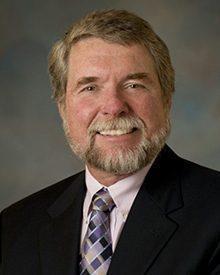Females diagnosed with HIV have experienced high rates of intimate partner violence, have a history of sexual victimization beginning in childhood, and are significantly more likely to abuse substances (Cavanaugh, Hansen, & Sullivan,2010; Cohen et al., 2000). However, little is known about how HIV risk behaviors begin and are sustained throughout adolescence among high-risk females who have been abused. In addition, the landscape of sexual socialization is rapidly changing as internet pornography becomes more accessible (Ybarra, Finkelhor, Mitchell, & Wolak, 2009) and social media websites more popular (Rideout, Foehr, Roberts, & Foundation, 2010).
This study aimed to understand how cyber-sexual socialization is related to HIV risk behavior in conjunction with other risk behaviors (such as substance use) through the person-centered approaches of Latent Class Analysis and Latent Transition Analysis. Using data from the Female Adolescent Development Study (FADS) which followed a high-risk sample (45% African American and 53% maltreated) of female adolescents from age 14-19, the proposed study (1) identified particular sub-groups of female adolescents at particular risk for substance use and HIV risk behavior before the onset of those behaviors, informing the target population for intervention, (2) identified new risk factors through risky online behavior that are so much a part of adolescents sexual behavior today, informing the relevant content of interventions, (3) identified how clustering of many risk factors related to HIV and substance use transition over time, informing the timing of interventions, and (4) determined how the HIV risk path differs for maltreated adolescents and ethnic minorities so that interventions that target safe sexuality can help all female adolescents navigate safe sexual behavior.
Duration: 2015 - 2017
Project Funder(s)
Project Focus Area(s)
Developmental Period(s)
Level(s) of Analysis
Females diagnosed with HIV have experienced high rates of intimate partner violence, have a history of sexual victimization beginning in childhood, and are significantly more likely to abuse substances (Cavanaugh, Hansen, & Sullivan,2010; Cohen et al., 2000). However, little is known about how HIV risk behaviors begin and are sustained throughout adolescence among high-risk females who have been abused. In addition, the landscape of sexual socialization is rapidly changing as internet pornography becomes more accessible (Ybarra, Finkelhor, Mitchell, & Wolak, 2009) and social media websites more popular (Rideout, Foehr, Roberts, & Foundation, 2010).
This study aimed to understand how cyber-sexual socialization is related to HIV risk behavior in conjunction with other risk behaviors (such as substance use) through the person-centered approaches of Latent Class Analysis and Latent Transition Analysis. Using data from the Female Adolescent Development Study (FADS) which followed a high-risk sample (45% African American and 53% maltreated) of female adolescents from age 14-19, the proposed study (1) identified particular sub-groups of female adolescents at particular risk for substance use and HIV risk behavior before the onset of those behaviors, informing the target population for intervention, (2) identified new risk factors through risky online behavior that are so much a part of adolescents sexual behavior today, informing the relevant content of interventions, (3) identified how clustering of many risk factors related to HIV and substance use transition over time, informing the timing of interventions, and (4) determined how the HIV risk path differs for maltreated adolescents and ethnic minorities so that interventions that target safe sexuality can help all female adolescents navigate safe sexual behavior.
Project Funder(s)
Project Focus Area(s)
Developmental Period(s)
Level(s) of Analysis
Duration
2015 - 2017







